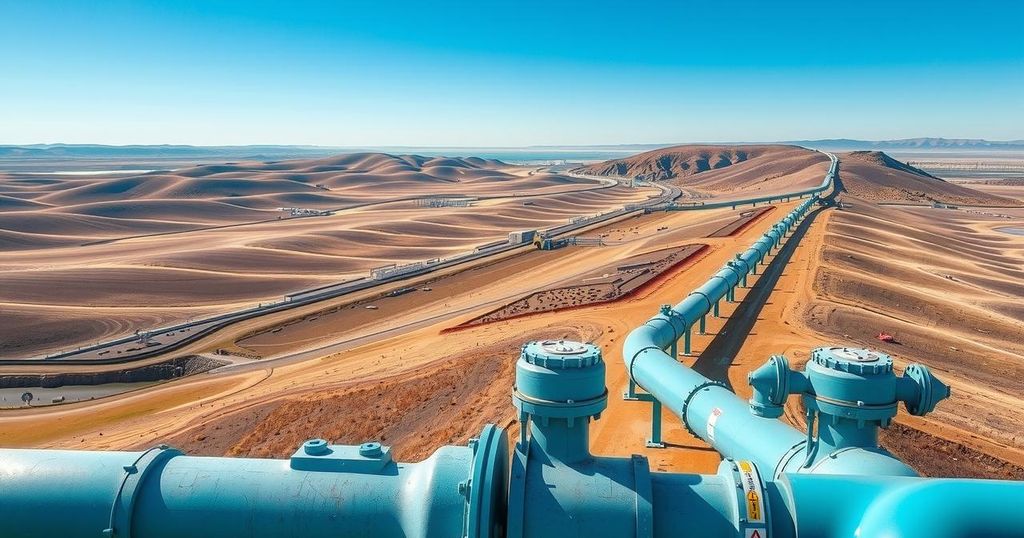Vietnam’s coffee exports reached USD 1.72 billion in the first two months. The State Bank of Vietnam adjusted the dollar exchange rate to 24,793 VND/USD. The government supports SMEs through financial connections, while a Swiss-backed initiative aims to improve supply chain financing. Vietnam’s aquatic product exports and overall trade show robust growth amidst strategic reforms in various sectors.
Vietnam’s coffee exports have impressively reached USD 1.72 billion in the initial two months of the year. Additionally, the State Bank of Vietnam adjusted the reference exchange rate for the US dollar to 24,793 VND/USD, a decrease by 1 VND from the previous day, reflecting ongoing economic adjustments.
In a move to support sustainable business practices, the Finance Ministry is facilitating connections for small- and medium-sized enterprises (SMEs) with financial institutions, investors, and both domestic and international experts. This initiative aims to enhance the operational capabilities of SMEs amid dynamic market conditions.
The International Finance Corporation (IFC), in collaboration with Switzerland, is bolstering support for supply chain finance in Vietnam. This initiative is backed by a grant of 5 million Swiss Francs (approximately 5.6 million USD) from the State Secretariat for Economic Affairs (SECO) and aims to assist over 500,000 SMEs in accessing financing up to 35 billion USD by 2029.
Vietnam has emerged as Brazil’s second largest supplier of aquatic products, with exports reaching USD 655 million in February, a notable year-on-year increase of 44.5%. Cumulatively, the total export value for the first two months of 2025 reached USD 1.42 billion, marking a 19% growth from the same period in the previous year.
The State Bank of Vietnam has announced plans to develop a roadmap to eliminate the credit growth quota policy, which has been in place since 2011. This policy has historically limited credit expansion among banks, instituted to curb hyperinflation during a challenging period for the economy.
In HCM City, bank lending has shown a minor decline in 2025, with outstanding credit at 3.936 trillion VND, reflecting a decrease of 0.17% from December 2024 while still representing a year-on-year increase of 12.2%. This highlights the nuanced trends in the credit landscape.
Following a temporary suspension from March 12 to 17, the e-tax system has resumed full operations, aimed at refining tax management processes and implementing much-needed structural improvements to ensure compliance and efficiency.
On the first day of the newly organized customs model, trade activity reached USD 1.05 billion. The new three-tier structure—comprising the Department of Customs, regional offices, and border checkpoints—was established following the 12th Party Central Committee’s Resolution 18, resulting in a significant reduction of operational units by approximately 54%.
The industrial real estate sector is poised for growth as the removal of legal obstacles accelerates. This legislative progress is deemed crucial for attracting foreign direct investment (FDI) and fostering comprehensive growth across the real estate landscape in 2025.
Vietnam Airlines and Vietjet Air are set to commence operations from Terminal T3 of Tan Son Nhat International Airport, which is designed to handle 20 million passengers yearly. The terminal represents a substantial investment of nearly 11 trillion VND (431.2 million USD) and commenced construction in December 2022.
Vietnam is anticipating a significant export revenue of USD 454 billion, with January and February exports totaling USD 65.2 billion, reflecting a 9.9% year-on-year growth. The imports during this period reached USD 62.9 billion, resulting in a trade surplus of 235 million USD, underlining a robust international trade posture.
An increase in the reference exchange rate was reported by the State Bank, now set at 24,794 VND/USD, rising by 15 VND since March 17. This adjustment is part of the ongoing management of monetary policy amidst global economic fluctuations.
Furthermore, Vietnam Airlines is planning to reinstate direct flights from Hanoi to Moscow starting May 8, as part of its strategic expansion, aiming to launch and restore 15 international routes in 2025 that will connect Vietnam to key global destinations.
A finance expert from the University of Cambridge has articulated that Vietnam possesses the foundation and potential to accomplish the establishment of an international financial center, emphasizing the nation’s strategic advantages in this regard.
A forum has been convened to promote trade and tourism connectivity between Japan, Vietnam, and Thailand, envisioning the economic collaboration among Fukuoka, northeastern Thailand, and central Vietnam as a key driver for regional economic development.
It has been suggested that Vietnam should maintain flexibility in selecting models for its financial center. Emphasizing human capital as a determinant, the importance of various factors such as the business environment and infrastructure was highlighted in accordance with global best practices.
Hoa Phat’s hot rolled coil (HRC) products have been exempted from the EU’s anti-dumping duties, reflecting the firm’s adeptness in navigating international trade regulations. This exemption fosters opportunities for downstream businesses to export to the EU without concerns over pricing and origin issues.
With strong demand persisting, Vietnam has exported over one million tonnes of rice in the first two months of the year, setting the stage for a robust recovery in rice exports amid rising global needs.
In the realm of international relations, Vietnam remains a bright spot in Italy’s Asia strategy, solidifying its position as the largest trading partner in ASEAN with a bilateral trade turnover of USD 6.9 billion in 2024, representing a 13.1% increase from the previous year.
Furthermore, efforts are underway between Vietnam and the United States to bolster comprehensive energy cooperation. Vietnam’s Minister of Industry and Trade, Nguyen Hong Dien, affirmed the nation’s commitment to fostering a balanced economic relationship with the U.S., prioritizing collaborative growth and stability.
In conclusion, Vietnam’s economic landscape showcases a significant upsurge in exports across various sectors including coffee and aquatic products. The Finance Ministry is proactively supporting SMEs while new international collaborations enhance access to financing. The establishment of Terminal T3 and ongoing reforms in the banking sector indicate a progressive shift towards modernization. With persistent growth projected despite global challenges, Vietnam’s proactive policies are strategically positioning the nation for sustainable economic development.
Original Source: en.vietnamplus.vn




